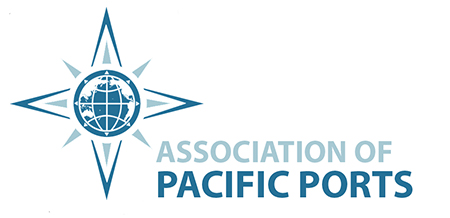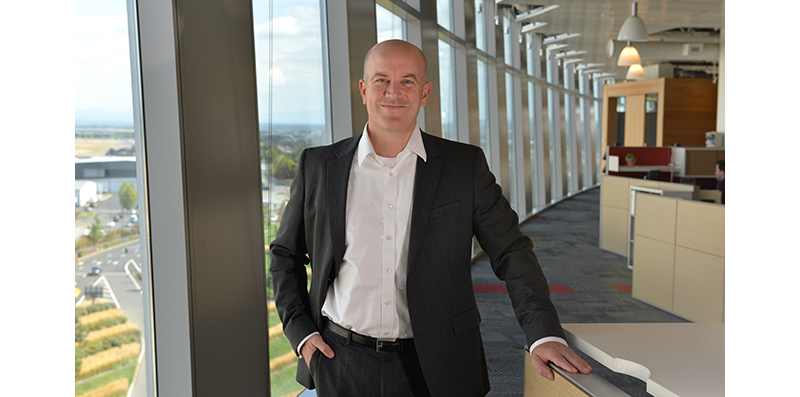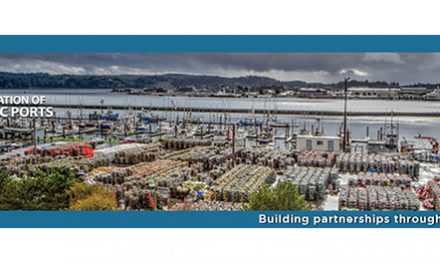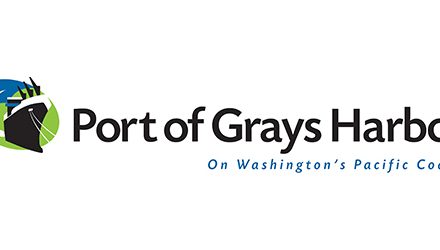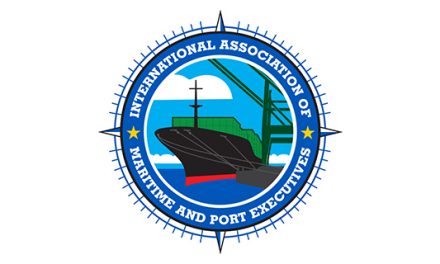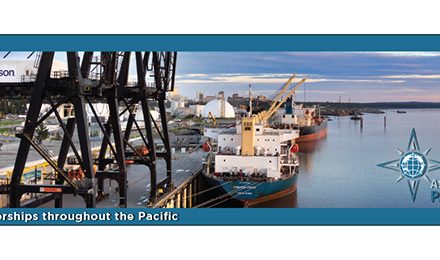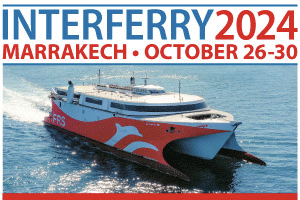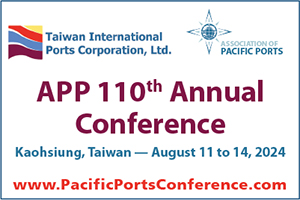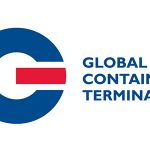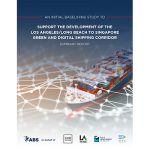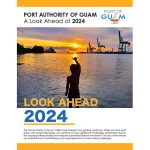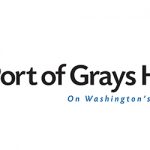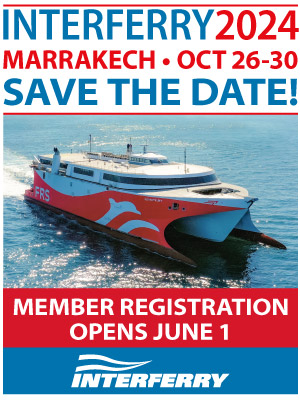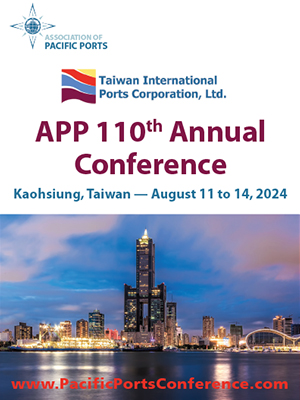Social equity policies are not uncommon. Undeniably, many organizations — both public and private — hold the values that are illustrated by such policies. When it comes to actively pursuing strategies that will truly create a shared prosperity however, the Port of Portland is outshining the rest. “The Port’s goal has always been to drive economic growth and improve our region’s quality of life,” said Curtis Robinhold, Executive Director. “When we started having conversations about diversity, equity and inclusion — both internally and with the community — it opened our eyes as to who was sharing in that prosperity and led to questions about what we could do better to create opportunities for the entire community.” The Port’s journey from recognition to implementation and further, to seeing successes, stands as a lesson to others: a strong tide floats all boats.
Background and context
Having joined the Port in 2014 as Deputy Executive Director and then taking on the role of Executive Director in 2017, Robinhold’s experience in both the public and private sectors has provided for a perspective that not only looks at what’s best for the community but at how to move initiatives forward by applying broad business practices. As Chief of Staff to Oregon Governor John Kitzhaber, he oversaw the governor’s policy agenda, staff, and policy advisors. As CEO of an energy efficiency finance company in Portland and managing director of BP Alternative Energy’s global gas-fired power business, he was able to apply the business training from his MBA and Master of Environmental Management from Yale University. Indeed, with about 96 percent of the Port’s revenue coming from business transactions and the remaining four percent from tax dollars, Robinhold’s approach to “operating like a business but still focusing on our corporate mission to find the best interests of the community” is a sound strategy.
The primary business for the Port of Portland is the Portland International Airport (PDX), generating about 80 percent of revenue. They additionally operate two general aviation airports, four marine terminals (autos, containers, and mineral and grain bulks), five business and industrial parks, and the dredge Oregon. It’s a sizeable portfolio for the roughly 750 employees who make up the Port’s workforce not to mention the tens of thousands who rely on it as a critical facilitator for trade and economic growth.
Like ports around the world, Portland’s experience with the pandemic of the past year was “pretty rough” but Robinhold is seeing signs of recovery, especially related to their aviation portfolio. “Our volumes are still down about 60 percent to pre-pandemic numbers at PDX but our big three airlines – Alaska, Southwest, and Delta — have resumed flying to most of their non-stop destinations. Questions remain about when international will return but we’re seeing movement toward getting those routes back as well.” On the bright side, air cargo operations were up 9 percent last year.
Marine operations are rebounding following the shock to the supply chain that all ports saw at the beginning of the pandemic. “We’re a relatively niche port on the container side but we have a large auto and bulk business,” he said. “SM Line started calling on Terminal 6 last year and we’ve been seeing record productivity with the container business. Auto imports and exports, while still down about 26 percent, are bouncing back so we feel good about that business.”
Diversity, equity, and inclusion
While the formal implementation of the Port’s equity plan wasn’t until July 2019, efforts to address racism, discrimination, and intolerance started in earnest as far back as 2013/14. The initiative gained momentum when two consultants were hired in 2015 to lead the Port and the community through the process, starting with the issue of race. “There was some pushback when we started,” said Robinhold, “but we’ve been learning more about how to think and talk about race more honestly.” He credits his nine-member Commission with providing the direction and permission to pursue a social equity policy. “The work has really helped us see other areas where we can leverage our activities — the dollars we spend and the way we engage with the community.”
With guiding principles established and a policy approved by the Commission in 2018, the Port’s social equity program manager, Dr. Steven Nakana, guided the 18 departments that oversee operations through the development of their own equity plans. Department leaders consulted with individuals from community-based organizations, other public agencies, and private companies to set measurable actions and goals. Three common themes across their strategies were identified and became the basis of the Port’s consolidated equity plan:
- Increase small business participation;
- Create an equitable, inclusive, and welcoming place to work; and
- Engaging community
Looking first at small business participation, Robinhold described a process designed to open up the Port’s bidding system for minority contractors and small business owners. A good example of an initiative designed to increase participation is the Port’s Mento Protégé Program. Established in 1995, the goal of the program is to provide ways for minority and women-owned small businesses to overcome barriers in competing for port contracts. By pairing a local small business with a port employee (often an engineer or program manager) and a third-party contractor, the three-year program guides companies through the development of a strategic plan, education and training, and supportive services. The program has resulted in a 104-percent increase in small business contracts and subcontracts in the last five years and, overall, making up 57 percent of the Port’s contracts.
“Our criteria for selecting contractors have expanded beyond simple consideration of money,” he said. “We’re now considering measures like the kind of jobs we are creating and who is getting those jobs. And in addition to our goals for greater inclusion of small businesses, we have built in, as part of our decision-making process, a social equity category that weights the demographics of a bidder’s workforce, community contributions, and partnerships with small businesses.” He cited the recent example of a joint venture partnership between Specht Development Inc. — who has provided project and construction management on over 11 million square feet of commercial and industrial real estate — and Colas Construction, a Black family-owned, Portland-based construction company that was founded in 1997 with a focus on diversifying the real estate and construction industry as a whole. The partners have been contracted to develop a proposal for Lot 5 of the Gresham Vista Business Park, roughly 48 acres of land and one of the last large undeveloped Port properties.
In turning to the plan’s strategy of creating an equitable, inclusive, and welcoming place to work, Robinhold pointed out that efforts began by closely examining the make-up of their workforce and being able to track results. “For many years, we had a 90 percent white workforce. We’re now beginning to look more like Portland’s population at large,” he said.
The Port’s demographic dashboard posted on their website looks at overall changes to race and gender as well as dissecting the numbers by age, length of tenure, and hourly rates of pay. Evident throughout the statistics is that both race and gender gaps are poised to lessen even more as time progresses. For example, when looking at age, minorities in the under-30-year-old group make up about 40 percent while the 60-to-64 age group is at 10 percent, and the over-65 group shows no minorities at all.
Those who have worked at the Port for more than 10 years are predominantly white with minorities representing close to 40 percent of those with less than four years’ tenure. And while the percentage of women at the Port has remained stable over time — at just over 30 percent — the percentage of women with under four years tenure surpasses those with over 20 years. “We noticed that our attrition rate of women is higher at the entry wage level and at the highest salary end,” said Robinhold. “This could be attributed to concerns about inclusion — at the low end of the wage scale, you might find a maintenance team of 100 men with perhaps two women; and at the higher salaried end, it could be the ‘old boys’ network where a ‘good buddy’ might get the position over a woman.”
Efforts to address the imbalance within the Port’s workforce has meant looking more closely at the hiring process as well as engaging with partners such as contractors, and longshore and trade unions. “We maintain our policy of hiring the best person for the job,” Robinhold said, “but we’re making a conscious effort to evaluate some of the traditional criteria that have maintained unnecessary barriers. And by working with our partners in the unions, we’ve been able to fund apprenticeships for people of color to provide for a more diverse make-up of their workforce.”
As noted earlier, Robinhold ran into pushback from those who felt making a cultural change would leave them at a disadvantage. “Most of the pushback has been around understanding rather than political beliefs. There are three segments of employees — those who are adamantly opposed and think social equity is a waste of time; a much larger segment who is really engaged; and then there is the portion in the middle who haven’t engaged simply out of lack of interest. All large organizations have this challenge in trying to motivate that third segment.
“I’m never going to get the person who is dead set against new policies, but it takes continual engagement to bring along the folks who aren’t passionate one way or the other about the issues. At the very least, we need to raise their awareness and provide them with facts — the more people learn, the more inclined they are to be a part of the conversation,” Robinhold said, pointing to weekly “Conscious Conversations” project led by diversity and inclusion program manager, Joy Fowler, that allows staff to discuss uncomfortable issues about race, gender and belonging; they can either engage in discussion or simply log-on to listen anonymously.
The third and last priority — engaging with the community — has meant a shift in the traditional ways the Port has gone about carrying out plans for key projects. Traditionally, the Port would develop plans internally before taking them out to the community for input. Now, the Port uses an equity lens, which asks employees to answer two basic question: Who benefits and who is burdened by this decision, project, or program? These two questions have shown the organization the importance of getting that input first and making sure that the input is implemented, and progress reported back to our community partners.
Robinhold pointed to current plans around a significant expansion of PDX as a good example. “This is a multi-billion-dollar project over five years and we’ve gone out to the community to ask them about their experiences, especially the disabled and alternate accessibility community. Things like being able to get past a curb to get into the airport, or effective signage, or aids for those with hearing impairments — these issues are important when it comes to making the airport as accessible as possible and they’re ones that we typically don’t think about.”
What does the future look like?
Robinhold likens the current cultural shift that he sees taking place at the Port to that of the environmental awareness of the 1980s and 1990s. “Thirty years ago, no one ever questioned the impact a project would have on air or habitat quality and now it’s one of the first questions we ask,” he said. “Our goal is to do the same with equity and inclusion. It relates to how we think about our work and how we think about our coworkers and creating opportunities for everyone in the community. Once you understand more about the impact of racism, discrimination, and exclusion, you really start to feel like you can do something about it and that’s extremely rewarding.”
“We see the future of the Port as one that reflects the make-up of the community,” Robinhold said. “You’re helping to bring someone into the system who creates wealth that is more representative of what the community looks like.”
When asked if any segments of the Port’s business have been easier than others in implementing a systemic change, Robinhold noted that the aviation sector, with a much more public/customer focus has been quicker to adapt, especially with partners like Delta Airlines who have taken on a leadership role in creating equity. On the marine side, with a more business-to-business focus, Robinhold said efforts require the inclusion of many more partners, such at the shippers, the carriers, and the unions. “We continue to encourage our partners to consider their own demographics and how they can integrate some of our examples into their own policies.”
Working with all levels of government, Robinhold said that the overall goal is to simply make Oregon a better place for all. “We still have issues — homelessness and poverty, for example — that need to be worked through, but the conversations are happening. We have discussions with our elected officials on ways to create jobs, and we discuss our ideas, not just for the Port but for the entire region.” He further noted that, as recovery from COVID-19 progresses, the emphasis will be put on creating ‘shovel-ready’ jobs. “Hopefully, it will help us recover in a way that is quick, broad-based and with shared prosperity at the forefront.”
